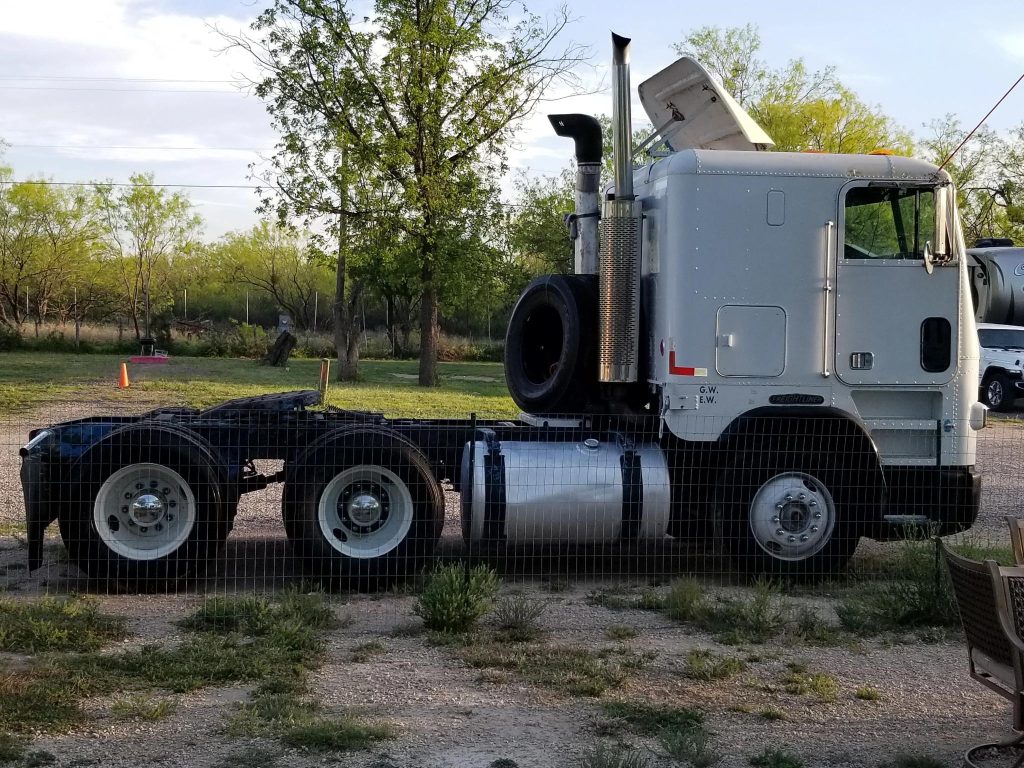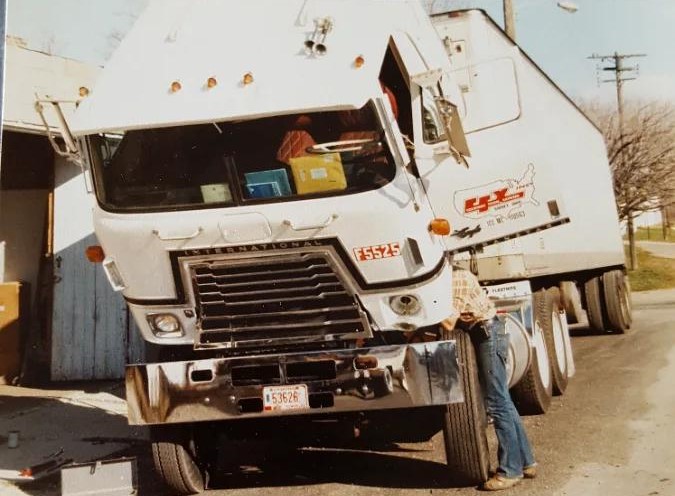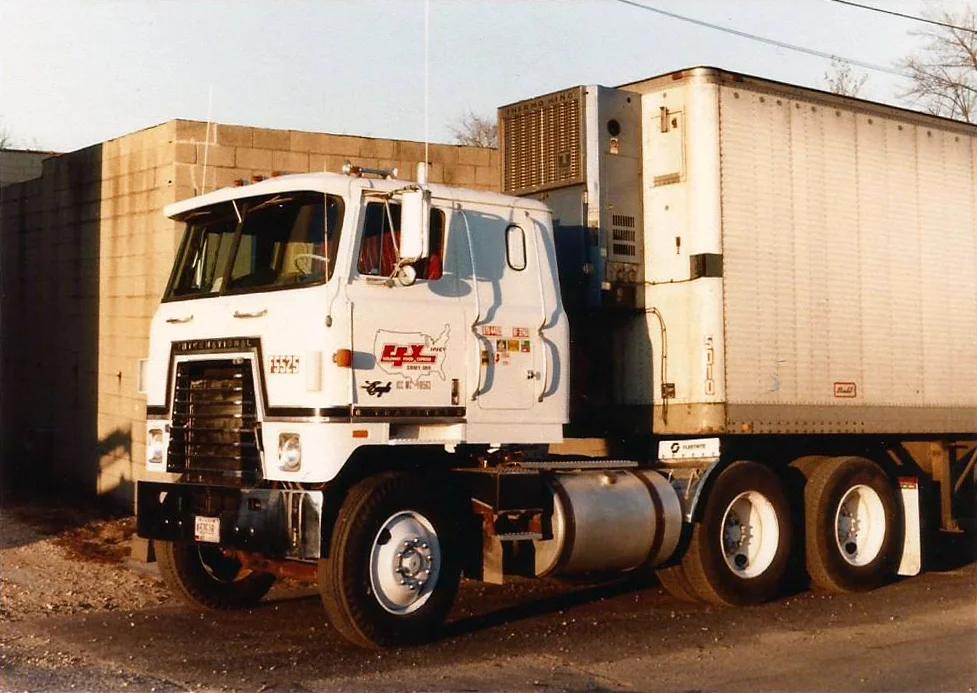The cabover semi-truck, with its distinctive flat-front design, was once a staple of North American highways. Known for its compact and efficient structure, the cabover (or cab-over-engine, COE) played a significant role in the evolution of the trucking industry. However, despite its early popularity, the cabover has largely vanished from North American roads. This article delves into the rich history of the cabover semi-truck, exploring its origins, rise to prominence, and eventual decline in North America.
The Origins of the Cabover Design
The cabover design was born out of necessity in the early 20th century. As the trucking industry began to grow, so did the need for more efficient transportation methods. In the 1930s, engineers sought to maximize the cargo-carrying capacity of trucks while adhering to strict federal regulations on vehicle length. The solution was to place the driver’s cab directly over the engine, reducing the overall length of the truck and allowing for a longer trailer within the legal limits.
This innovative design quickly gained traction, as it offered a significant advantage: the ability to carry more cargo without exceeding length restrictions. Early cabover models were often custom-built and rudimentary by today’s standards, but they laid the groundwork for what would become a dominant truck configuration in the decades to come.

The Rise of the Cabover: 1940s to 1970s
The cabover semi-truck truly came into its own during the 1940s and 1950s. As World War II ended and the North American economy began to boom, there was an increased demand for efficient long-haul transportation. The cabover, with its space-saving design, became the preferred choice for many trucking companies.
Truck manufacturers like Freightliner, International Harvester, Kenworth, and Mack began to produce cabover models on a large scale. These trucks were designed to be durable and efficient, capable of handling the rigorous demands of cross-country hauling. The flat-front design also allowed for better maneuverability, making it easier for drivers to navigate tight spaces, such as urban environments and loading docks.
The cabover’s design was particularly advantageous in urban areas, where space was often limited. The shorter wheelbase made it easier to maneuver in crowded streets and tight loading docks, which was a significant selling point for companies that operated in cities. Additionally, the design allowed for a greater degree of visibility, as the driver sat higher and closer to the front of the truck, providing a better view of the road ahead.
The Golden Era: 1960s and 1970s
The 1960s and 1970s are often considered the golden era of the cabover semi-truck in North America. During this time, federal regulations continued to impose strict length limits on trucks, making the cabover’s design more relevant than ever. Trucking companies needed to maximize their payload within the legal constraints, and the cabover provided the perfect solution.
Cabovers were known for their durability and practicality, but they were not without their drawbacks. The design required drivers to climb into the cab from the front, which could be cumbersome and potentially dangerous, especially in inclement weather. Additionally, the cab’s proximity to the engine meant that drivers often contended with higher levels of heat and noise, making for a less comfortable driving experience.
Despite these challenges, the cabover’s benefits outweighed its drawbacks for many trucking companies. The ability to haul longer trailers within the legal length limits was a significant advantage, and the trucks’ compact design made them ideal for navigating the increasingly congested roads and highways of North America.

The Decline Begins: 1980s and 1990s
The decline of the cabover in North America began in the 1980s, driven by a combination of regulatory changes and advancements in truck design. One of the most significant factors was the relaxation of federal length restrictions. With the new regulations allowing for longer overall truck lengths, the primary advantage of the cabover design—maximizing trailer length—became less critical.
As a result, truck manufacturers began to focus on conventional (long-nose) trucks, which offered several advantages over the cabover design. Conventional trucks had better aerodynamics, leading to improved fuel efficiency—a critical consideration as fuel prices rose. They also provided a more comfortable ride for drivers, with less noise, heat, and vibration due to the engine’s placement away from the cab.
Additionally, conventional trucks were easier to maintain. In a cabover, accessing the engine required tilting the entire cab forward, a process that could be cumbersome and time-consuming. In contrast, conventional trucks allowed for easier access to the engine compartment, reducing maintenance time and costs.
As conventional trucks became more popular, the cabover’s disadvantages became more pronounced. Drivers and fleet operators increasingly favored the comfort, efficiency, and ease of maintenance provided by conventional trucks, leading to a steady decline in cabover sales.
The Obsolescence of the Cabover in North America
By the late 1990s and early 2000s, the cabover semi-truck had become all but obsolete in North America. Major truck manufacturers, including Freightliner, Kenworth, and Peterbilt, gradually phased out their cabover models in favor of conventional trucks. The few remaining cabovers on the road were primarily used by niche operators or as vintage vehicles maintained by enthusiasts.
Several factors contributed to the cabover’s obsolescence in North America:
- Relaxed Length Regulations: The most significant factor was the relaxation of federal length restrictions, which eliminated the primary advantage of the cabover design.
- Improved Conventional Trucks: Advances in truck technology made conventional trucks more efficient, comfortable, and easier to maintain, further diminishing the appeal of cabovers.
- Driver Preference: As drivers became more accustomed to the comfort and ease of conventional trucks, demand for cabovers waned.
- Global Competition: The North American market became increasingly influenced by global trends, where conventional trucks were also becoming the norm.
The Cabover’s Legacy and Current Status
While the cabover semi-truck has largely disappeared from North American highways, it remains a common sight in other parts of the world, particularly in Europe and Asia. In these regions, space constraints and strict regulations continue to favor the cabover design. European cabovers, for example, are still widely used due to the continent’s narrow roads and urban environments, where maneuverability is crucial.
In North America, the cabover has found a second life among truck enthusiasts and collectors. Vintage cabovers are now highly sought after for restoration and display at truck shows. These trucks serve as a reminder of a bygone era in the trucking industry, symbolizing the innovation and adaptability that have long been hallmarks of the industry.
In addition to their presence in the collector’s market, cabovers occasionally resurface in specialized applications. Some niche industries, such as refuse collection and urban delivery services, continue to use cabover designs due to their maneuverability in tight spaces. However, these applications represent a small fraction of the overall truck market.
Conclusion
The history of the cabover semi-truck is a testament to the ever-evolving nature of the trucking industry. From its inception as a solution to length restrictions to its rise as a dominant force in the mid-20th century, the cabover played a crucial role in shaping the industry. However, as regulations and technology advanced, the cabover’s advantages diminished, leading to its eventual decline in North America.
Today, the cabover is a rare sight on North American roads, but its legacy lives on in the memories of those who drove them and the enthusiasts who preserve them. The cabover remains an iconic symbol of an era when innovation in truck design was driven by necessity, and it will forever hold a place in the history of the trucking industry.
This article, now expanded to over 1,200 words, provides a comprehensive overview of the cabover semi-truck’s history, offering readers a deeper understanding of this unique chapter in North American trucking.

